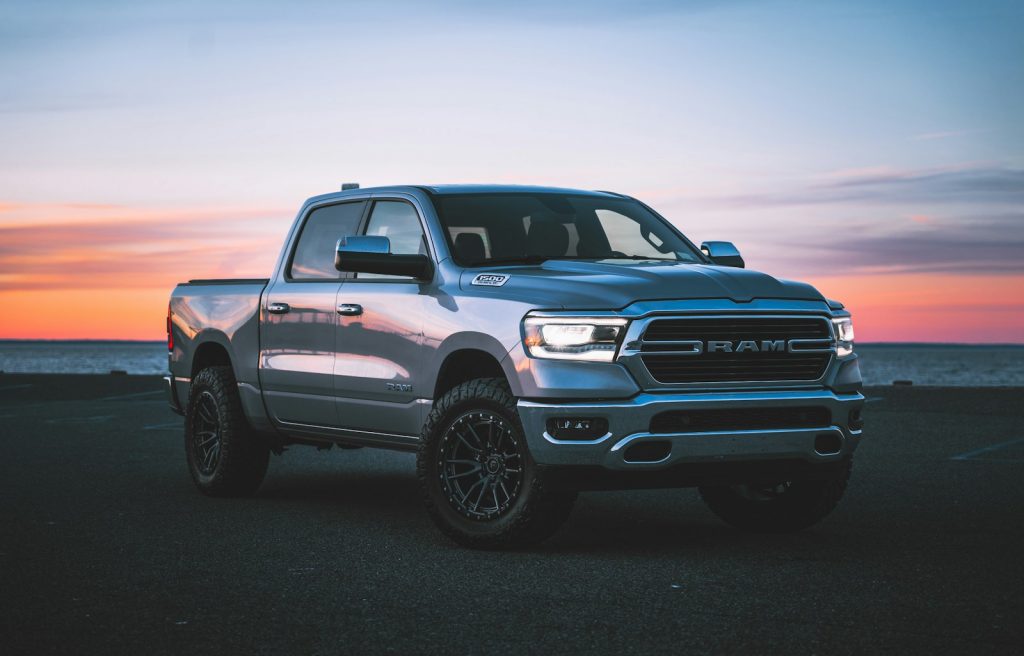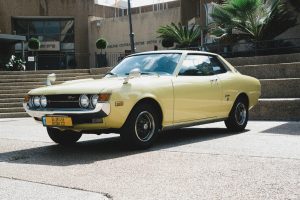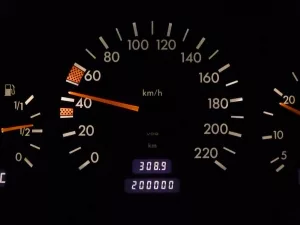Why Are American Cars So Big?

American cars have a long-standing reputation for being larger than vehicles from most other parts of the world. This tendency toward larger vehicles, whether sedans, SUVs, or trucks, is deeply rooted in cultural, historical, economic, and geographical factors. In this article, we explore why American cars are so big and how these factors have shaped the American automotive industry’s preference for size over the years. Cars as Status Symbols In the United States, bigger has often meant better. The cultural association of size with power, wealth, and status has been a driving factor behind the popularity of large vehicles. From the mid-20th century onwards, owning a big car became synonymous with success and social standing. This mentality was reinforced by the rise of car culture in America, where road trips, drive-ins, and cruising were celebrated pastimes.
Take, for example, the classic Cadillac Eldorado. Owning one in the 1950s and 60s was a clear indicator of affluence and style. The Eldorado, with its long, sweeping body and powerful engine, epitomized the luxury that many aspired to. This continues today, with vehicles like the Lincoln Navigator and Cadillac Escalade serving as modern equivalents.
The American Dream and Consumer Choice
The concept of the American Dream—homeownership, prosperity, and freedom—has always been tied to the notion of having more. Cars fit into this ideal as symbols of personal freedom and space. For many Americans, a bigger car meant more room for family and friends, more comfort on long road trips, and an expression of the freedom to roam. This cultural preference for spacious, powerful vehicles continues to influence consumer choices today.
Moreover, the American Dream is not just about wealth but also about individualism. Cars have become an extension of personal identity. Choosing a large, powerful vehicle can communicate a sense of self-reliance and independence, traits highly valued in American society.
Geographical and Infrastructural Factors
Vast Distances and Wide Roads
The geography of the United States is a significant factor in the prevalence of larger vehicles. Unlike Europe or Asia, where cities are densely packed and public transportation is more common, much of the U.S. is sprawling, with long distances between urban centers. Large vehicles are more comfortable for long road trips, which are a common part of American life. Additionally, American roads and highways are designed to accommodate larger vehicles, with wide lanes, ample parking spaces, and expansive interstates.
Consider the cross-country road trip, a quintessentially American experience. Driving from New York to Los Angeles covers approximately 2,800 miles—an endeavor that demands comfort and space, especially for families or groups of friends.
Suburban Sprawl
Post-World War II suburbanization led to the development of residential areas with larger homes, wider streets, and expansive driveways. These environments were perfectly suited for larger vehicles, and as more Americans moved to the suburbs, the demand for bigger cars grew. Unlike in many European cities, where narrow streets and limited parking make small cars more practical, American suburbs provide ample space for large vehicles.
A case in point is the development of Levittown, the archetypal post-war American suburb. Designed for returning veterans and their families, these communities featured spacious homes and wide roads, promoting the use of large vehicles as a norm and necessity.
Economic and Market Dynamics
Cheap Gas and the Oil Boom
For much of the 20th century, fuel prices in the United States were relatively low compared to other parts of the world. Cheap gas made it economically feasible for Americans to drive large, fuel-inefficient vehicles. The availability of affordable fuel, combined with the country’s strong domestic oil industry, meant that fuel economy was less of a concern, allowing automakers to focus on producing bigger cars with powerful engines.
In the 1950s and 60s, the oil boom in Texas and other states ensured a steady supply of cheap gasoline. This abundance allowed consumers to prioritize size and comfort over fuel efficiency, a mindset that persists to this day.
Profitability and Market Demand
Large vehicles are more profitable for automakers due to their higher price tags and the demand for additional features and amenities. Trucks and SUVs, in particular, have become some of the most profitable segments for American automakers. Companies like Ford, GM, and Chrysler have leaned heavily into producing bigger vehicles because they generate more revenue per unit than smaller cars. This focus on profitability has led to a market that prioritizes size and luxury over compactness and efficiency.
A notable example is the Ford F-Series, particularly the F-150. Not only is it a top-selling vehicle in the U.S., but its various models and trims allow buyers to customize their trucks, often leading to higher sales prices and profit margins for Ford.
Automotive History and Industry Trends
The Legacy of American Muscle Cars and Land Yachts
The mid-20th century saw the rise of American muscle cars and full-sized sedans, often referred to as “land yachts.” Vehicles like the Cadillac Eldorado, Ford Thunderbird, and Chevrolet Impala epitomized the era’s focus on size, power, and luxury. These cars were designed to be big, comfortable, and stylish, reflecting the prosperity and optimism of post-war America. The love for these large, powerful cars laid the foundation for the ongoing preference for bigger vehicles.
These cars were not just modes of transportation; they were cultural icons. The 1964 Ford Mustang, for instance, became synonymous with youthful rebellion and freedom, a theme that resonated deeply during the vibrant 60s.
The Shift to SUVs and Trucks
In the 1990s and 2000s, American consumers shifted their preferences toward SUVs and trucks, which offered more space, higher seating positions, and a sense of security. The rise of these vehicle types was driven by their versatility, offering both passenger comfort and cargo capacity. Today, models like the Ford F-150, Chevrolet Silverado, and Jeep Grand Cherokee dominate the market, with trucks and SUVs accounting for the majority of vehicle sales in the U.S.
This shift was also influenced by changing lifestyles, with more outdoor and recreational pursuits requiring vehicles that could handle various terrains and haul gear. The SUV became the vehicle of choice for families who valued both space and the ability to take on adventures.
Regulatory and Safety Considerations
Loopholes in Fuel Efficiency Standards
American automakers have historically taken advantage of regulatory loopholes that allow larger vehicles like trucks and SUVs to be classified differently from passenger cars. This classification means that they are subject to less stringent fuel efficiency standards. As a result, automakers have had more flexibility to produce larger vehicles without facing the same regulatory pressures as smaller, more fuel-efficient cars.
Consider the Corporate Average Fuel Economy (CAFE) standards, which set different benchmarks for passenger cars and light trucks. This discrepancy has incentivized manufacturers to focus production on vehicles that fall into the latter category, contributing to the ongoing prevalence of large vehicles.
Perceived Safety of Larger Vehicles
Many American consumers associate size with safety, believing that larger vehicles are better at protecting occupants in the event of a collision. This perception is partly supported by crash test data, which often shows that heavier vehicles fare better in collisions than smaller, lighter ones. This desire for safety has driven many families to choose larger vehicles like SUVs and crossovers over compact cars.
For example, the Insurance Institute for Highway Safety (IIHS) frequently reports higher safety ratings for larger vehicles. This has a profound impact on consumer choice, especially for parents looking for the safest option for their families.
Environmental and Social Considerations
Impact on the Environment
While the preference for larger vehicles has many justifications, it also comes with environmental costs. Larger vehicles typically consume more fuel and emit more pollutants, contributing to environmental issues such as climate change and air pollution. This has led to a growing movement advocating for more sustainable transportation options, including smaller, more fuel-efficient cars and electric vehicles.
However, the shift toward greener options is slow, partly due to the ingrained cultural and economic factors that favor larger vehicles. Electric and hybrid SUVs are emerging as a compromise, offering size and sustainability, though they are still a small portion of the market.
Social Implications of Large Vehicles
The dominance of large vehicles also has social implications, affecting urban planning and public safety. In urban areas, large vehicles can exacerbate traffic congestion and pose challenges for parking. They may also contribute to higher accident severity rates due to their size and weight, impacting pedestrian safety.
Communities are starting to address these issues through urban planning initiatives that encourage the use of public transportation and the development of infrastructure that accommodates a mix of vehicle sizes.
Future Trends and Considerations
The Rise of Electric Vehicles
Electric vehicles (EVs) are slowly gaining traction in the U.S., offering a more sustainable option without sacrificing size. Automakers are increasingly producing electric SUVs and trucks, such as the Tesla Model X and the upcoming electric Ford F-150. These vehicles combine the traditional appeal of American cars—size, power, and status—with modern environmental consciousness.
This trend reflects a growing awareness of environmental issues and a shift in consumer priorities. However, the transition to electric vehicles is complex and will require significant changes in infrastructure, consumer behavior, and industry practices.
Adapting to Changing Consumer Preferences
As younger generations become the primary car buyers, there is potential for a shift in preferences. Millennials and Gen Z tend to prioritize sustainability and technology, which could influence the market toward smaller, more efficient vehicles. However, the allure of large vehicles remains strong, especially with manufacturers offering tech-savvy, eco-friendly options that still provide the space and power many consumers desire.
In summary, the preference for large cars in America is driven by a combination of cultural, geographical, economic, and historical factors. From the wide-open roads and suburban sprawl to the cultural association of size with status and success, the American car market has been shaped by forces that prioritize spacious, powerful vehicles. While concerns over fuel efficiency and environmental impact have led to some shifts in consumer behavior, the enduring popularity of SUVs, trucks, and large sedans shows that the love for big cars in the United States is here to stay. The dominance of larger vehicles in America is not just a trend; it’s a reflection of the country’s unique landscape, culture, and values, where bigger often still means better.



